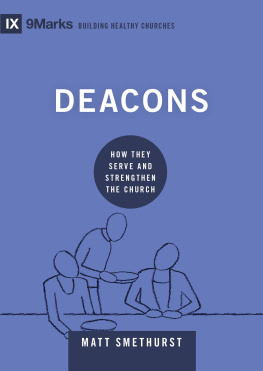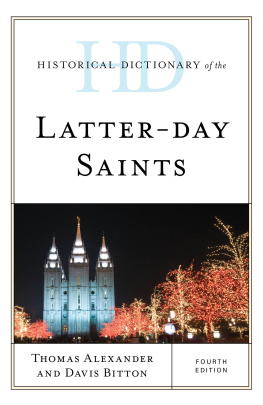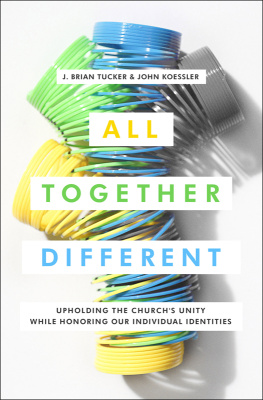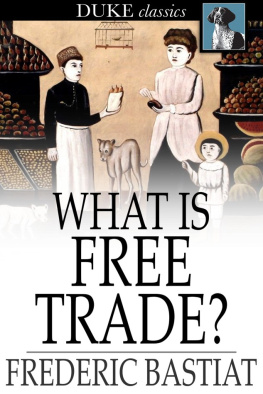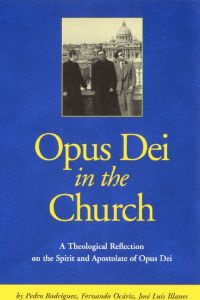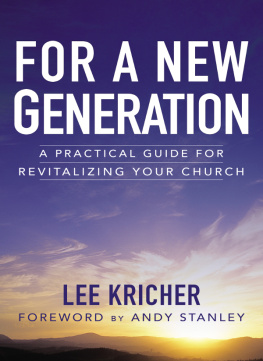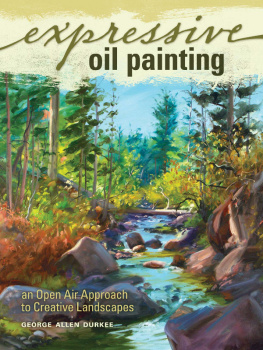Frederic Church
Frederic Church
The Art and Science of Detail
Jennifer Raab

Published with assistance from the Wyeth Foundation for American Art. Publication has also been made possible by the generous support of the Department of the History of Art Publications Fund, Yale University.
Copyright 2015 by Jennifer Raab.
All rights reserved.
This book may not be reproduced, in whole or in part, including illustrations, in any form (beyond that copying permitted by Sections 107 and 108 of the U.S. Copyright Law and except by reviewers for the public press), without written permission from the publishers.
Excerpt from Desert Places from the book The Poetry of Robert Frost, edited by Edward Connery Lathem. Copyright 1969 by Henry Holt and Company, copyright 1936 by Robert Frost, copyright 1964 by Lesley Frost Ballantine. Reprinted by arrangement with Henry Holt and Company, LLC. All rights reserved.
yalebooks.com/art
Designed and set in Perpetua type by Carolyn Eckert
Printed in China by Regent Publishing Services Limited
Library of Congress Control Number: 2014952573
ISBN 978-0-300-20837-5
e ISBN 978-0-300-21286-0
A catalogue record for this book is available from the British Library.
This paper meets the requirements of ANSI / NISO Z 39.481992 (Permanence of Paper).
10 9 8 7 6 5 4 3 2 1
Jacket illustrations: (front) Frederic Edwin Church, The Heart of the Andes, 1850 (detail of )
Frontispiece: Frederic Edwin Church, The Icebergs, 1861 (detail of )
FOR MY PARENTS
Contents
ACKNOWLEDGMENTS
THIS BOOK HAS BEEN written in many landscapes and shaped by many people. I am especially grateful to Alex Nemerov. Without his encouragement of this project from its earliest inception and his critical guidance throughout all these years, it would not have been realized. At Yale I have had exceptional mentors and colleagues. I have learned a tremendous amount about landscape painting and about the nineteenth century from Tim Barringer; our discussions in front of works of art have provided a model of how to look at and articulate the visual. Carol Armstrongs support of this project has been vital to imagining and realizing its later development. From Ned Cooke, I have learned to consider the material world of objects and environment more deeply and rigorously. Conversations with Sally Promey about method and writing always came at crucial moments.
My research on Church began in earnest at the Olana State Historic Site in Hudson, New York. Valerie Balint, Evelyn Trebilcock, and Ida Brier welcomed me into Churchs home to pore over the written materials there. They patiently indulged my requests to look at everything and were wonderful guides to the collection and landscape. I am particularly grateful to Valerie Balint as well as Ronna Dixson of the New York State Office of Parks, Recreation and Historic Preservation for their help with images during the final stages of preparing the manuscript.
The support of many institutions and foundations have made this book possible. A summer in Giverny, France, supported by the Terra Foundation for American Art, provided an ideal environment in which to begin to write, think, and wander. I am particularly grateful to the director of the program, Veerle Thielemans, and to Winfried Fluck and Margaretta Lovell, who each offered valuable responses to my work. The Wyeth Foundation supported a year-long fellowship at the Smithsonian American Art Museum. I am grateful to Bill Truettner and Eleanor Jones Harvey for serving as my advisers and for their wisdom and generosity, to Amelia Goerlitz and the late Cynthia Mills for their guidance of the fellowship program, and to the other fellows in residence that year, with whom I have continued to talk in the years since, including Marie-Stphanie Delamaire, Melody Barnett Deusner, Adam Greenhalgh, Wendy Ikemoto, Asma Naeem, Prudence Peiffer, Emily Scott, Riccardo Venturi, and Glenn Willumson. A Junior Fellowship in Garden and Landscape Studies at Dumbarton Oaks was critical to looking beyond Churchs painted landscapes and developing my arguments about Olana. I am especially grateful to John Beardsley for his engagement with that material. While in Washington, discussions about Church with Franklin Kelly were crucial to the evolution of the project. My thanks go also to Gerald Carr for his responses to my papers on Church delivered in Washington and in Dallas. I am deeply indebted to all the Church scholars who have preceded me.
Postdoctoral fellowships have been essential in reimagining the book. I am enormously grateful to David Lubin, mentor and friend, with whom I taught a course on American art at Wake Forest University and whose ways of looking at works of art have influenced my own. My time spent at Reynolda House Museum of American Art, living with The Andes of Ecuador, shaped my ideas about Churchs paintings. I am thankful to Allison Slaby and Allison Perkins for supporting my curatorial work based on that painting and for their help in realizing the event that presented the picture to fifteen hundred new freshmen armed with opera glasses. It was a spectacle that I think would have delighted the artist.
In Berlin, while at the John F. Kennedy-Institut fr Nordamerikastudien at the Freie Universitt, I was privileged to spend time with many terrific scholars, including Alan Wallach, Angela Miller, Charlotte Klonk, and Laura Bieger; I am particularly grateful to Winfried Fluck for welcoming me as a research fellow in the Department of Cultural Studies and for all the productive conversations that followed. An Andrew W. Mellon Foundation postdoctoral fellowship at the Institute of Fine Arts at New York University allowed me to teach from my interests and advance the book further. I am thankful to my students and colleagues there, especially Patricia Rubin, Robert Slifkin, and Edward Sullivan.
An earlier version of appeared in Art History and benefited from the astute comments and questions of Sarah Monks and David Peters Corbett, who also provided invaluable feedback on other parts of the project. Aspects of my argument centered on The Heart of the Andes were published in the Art Bulletin and profited greatly from the responses of the two anonymous reviewers as well as Karen Lang and Fronia Simpson. I am grateful to Michelle Komie for her interest in the book and for her stewardship of the manuscript, together with Katherine Boller, at Yale University Press. I have been privileged to work with a wonderful group of people there, including Heidi Downey, Amy Canonico, Mary Mayer, Tamara Schechter, and Elma Sanders. I owe a special debt of gratitude to the two anonymous reviewers who read the first manuscript with care and rigor and whose insights, criticisms, queries, and ideas have improved it in ways both large and small. Having these two perspectives allowed me to chart my own argument more clearly.
The preparation of the images for this book was supported by a grant from the A. Whitney Griswold Faculty Research Fund at Yale University, and its publication was supported by the Wyeth Foundation for American Art. I am grateful to my research assistant, Nicole Bass, whose many hours of labor ensured that this book about details was, in fact, filled with details. In regard to details, I must thank Sarah Cash, who personally oversaw the photography of parts of Niagara during a particularly difficult moment at the Corcoran Gallery of Art.
Over the years, my ideas have been shaped, challenged, and refined by many peoplecolleagues, friends, and teachers. I would like to thank Martin Berger, Wanda Corn, Jay Curley, John Davis, Miguel de Baca, Gillian Forrester, Ellery Foutch, Jennifer Greenhill, Kristen Gresh, Michael Hatt, Guy Jordan, David Joselit, David Kermani, Ethan Lasser, Pamela Lee, Michael Leja, Alex Mann, Morna ONeill, Jennifer Roberts, Elizabeth Twitchell, David Ward, Bryan Wolf, and Christopher Wood.
Next page

